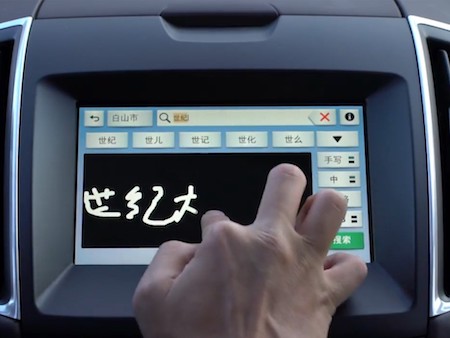Based on customer feedback , Dearborn automaker Ford Motor Co. has equipped the Mustang, the top-selling sports coupe globally and in China, to recognize traditional Chinese handwriting through the Ford SYNC 3 in-car entertainment, connectivity, and navigation system.
“The Chinese version of SYNC 3 is far more than just a translation of a global technology,” says Fisher Xu, SYNC supervisor for Ford Asia Pacific. “It’s really been localized to respond to a Chinese driver’s needs with a local point of view, from the voice commands that understand our accents and our habits, to the way we structure our statements.”
Xu says SYNC 3 allows the Mustang to understand handwritten Chinese characters inputted with the swipe of the driver’s finger, and also recognizes voice commands in Mandarin, providing drivers with a more seamless connectivity experience, from selecting music to getting directions in their native language. Previously, inputting Chinese characters on an in-car touch screen would require typing in pinyin, a phonetic spelling of the Chinese alphabet, and then selecting one of the multiple characters, all of which have analogous pronunciations, to use the infotainment system. Even with predictive technology, drivers found the process slower and less intuitive, especially those who prefer not to use pinyin.
Ford’s multi-modal handwriting feature allows users to scribble characters by hand and instantly recognizes each stroke of the character as it’s made, by tracing it and turning it into a typeface. With more than 2,500 commonly used characters in the Chinese language, and wide range of different writing styles and habits, SYNC 3 leverages automatic association technology based on a large database of characters and search algorithms to save users time and increase accuracy. The system is designed to decipher writing by either the driver or passenger, and can analyze writing from angles up to 15 degrees, with touch-screen capabilities similar to a smartphone.
The Mustang was introduced in Asia in 2015, to coincide with its 50-year anniversary. Sales in China have continued to grow, increasing 45 percent in 2016. SYNC 3’s Chinese handwriting feature is also available in several different Ford nameplates sold in China, including the Focus, Taurus, Edge, Kuga, and Explorer.






